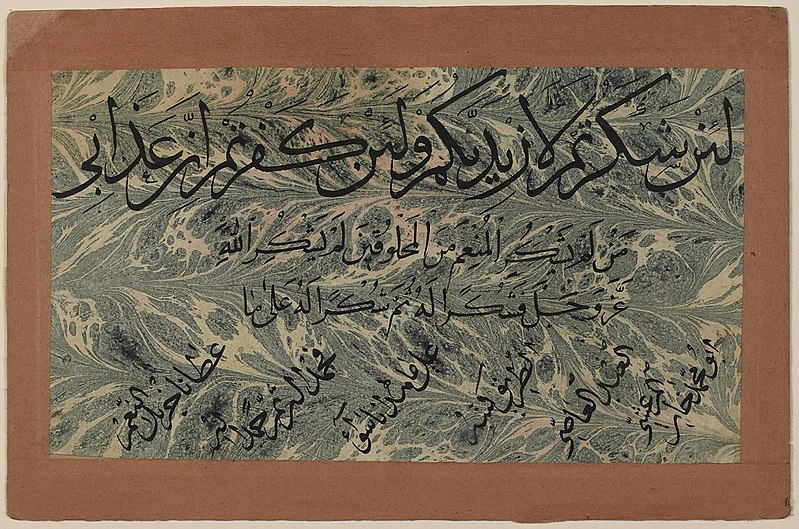Tập tin:Quran 14.jpg

Kích thước hình xem trước: 800×529 điểm ảnh. Độ phân giải khác: 320×212 điểm ảnh | 640×423 điểm ảnh | 1.024×678 điểm ảnh | 1.280×847 điểm ảnh | 2.932×1.940 điểm ảnh.
Tập tin gốc (2.932×1.940 điểm ảnh, kích thước tập tin: 2,28 MB, kiểu MIME: image/jpeg)
Lịch sử tập tin
Nhấn vào ngày/giờ để xem nội dung tập tin tại thời điểm đó.
| Ngày/giờ | Hình xem trước | Kích cỡ | Thành viên | Miêu tả | |
|---|---|---|---|---|---|
| hiện tại | 00:51, ngày 25 tháng 6 năm 2009 |  | 2.932×1.940 (2,28 MB) | Calliopejen1 | {{Information |Description=Dimensions of Written Surface: 20 (w) x 11.5 (h) cm Script: thuluth, Persian naskh, and tawqi' This fragmentary calligraphic panel includes a verse from the Qur'an (14:7) and praises to God executed in thuluth, Persian naskh, |
Trang sử dụng tập tin
Có 1 trang tại Wikipedia tiếng Việt có liên kết đến tập tin (không hiển thị trang ở các dự án khác):
Sử dụng tập tin toàn cục
Những wiki sau đang sử dụng tập tin này:
- Trang sử dụng tại af.wikipedia.org
- Trang sử dụng tại as.wikipedia.org
- Trang sử dụng tại bg.wikipedia.org
- Trang sử dụng tại bs.wikipedia.org
- Trang sử dụng tại de.wikipedia.org
- Trang sử dụng tại en.wikipedia.org
- Trang sử dụng tại eo.wikipedia.org
- Trang sử dụng tại fr.wikipedia.org
- Trang sử dụng tại hu.wikipedia.org
- Trang sử dụng tại kk.wikipedia.org
- Trang sử dụng tại lt.wikipedia.org
- Trang sử dụng tại nl.wikipedia.org
- Trang sử dụng tại ru.wikipedia.org
- Trang sử dụng tại sv.wikipedia.org
